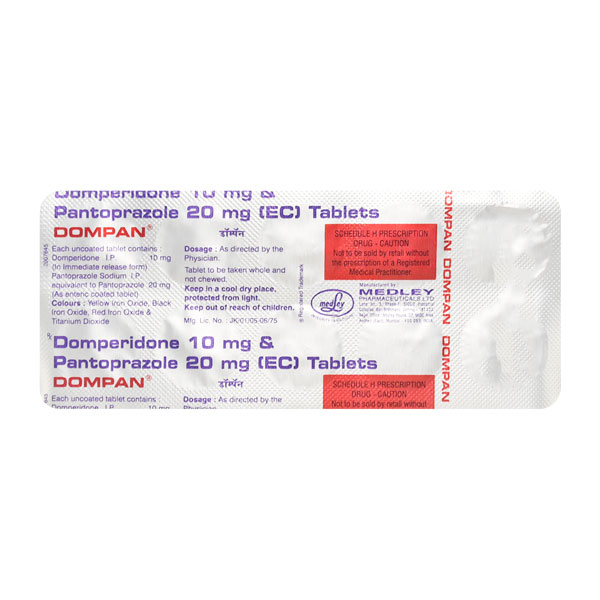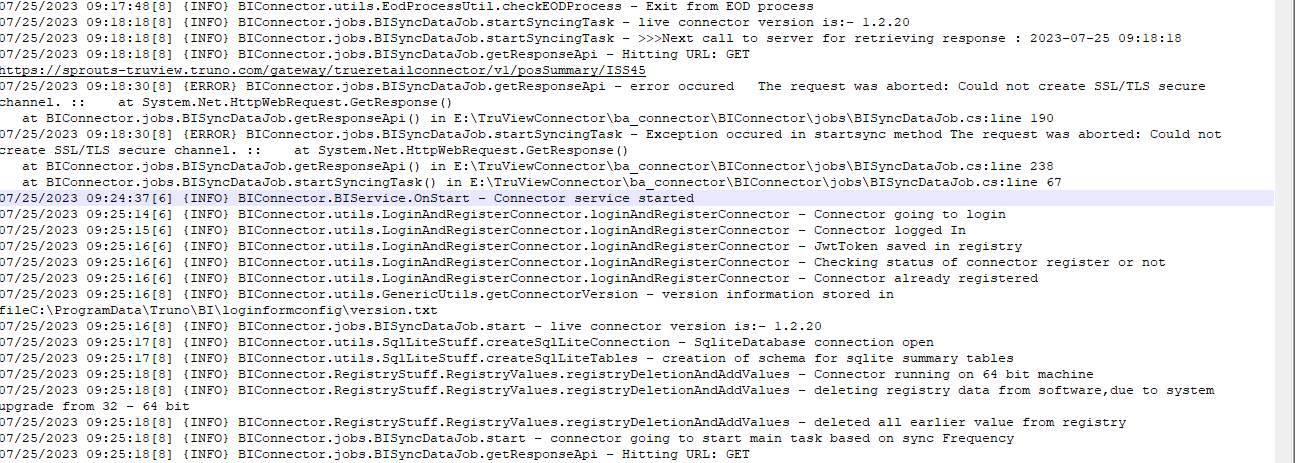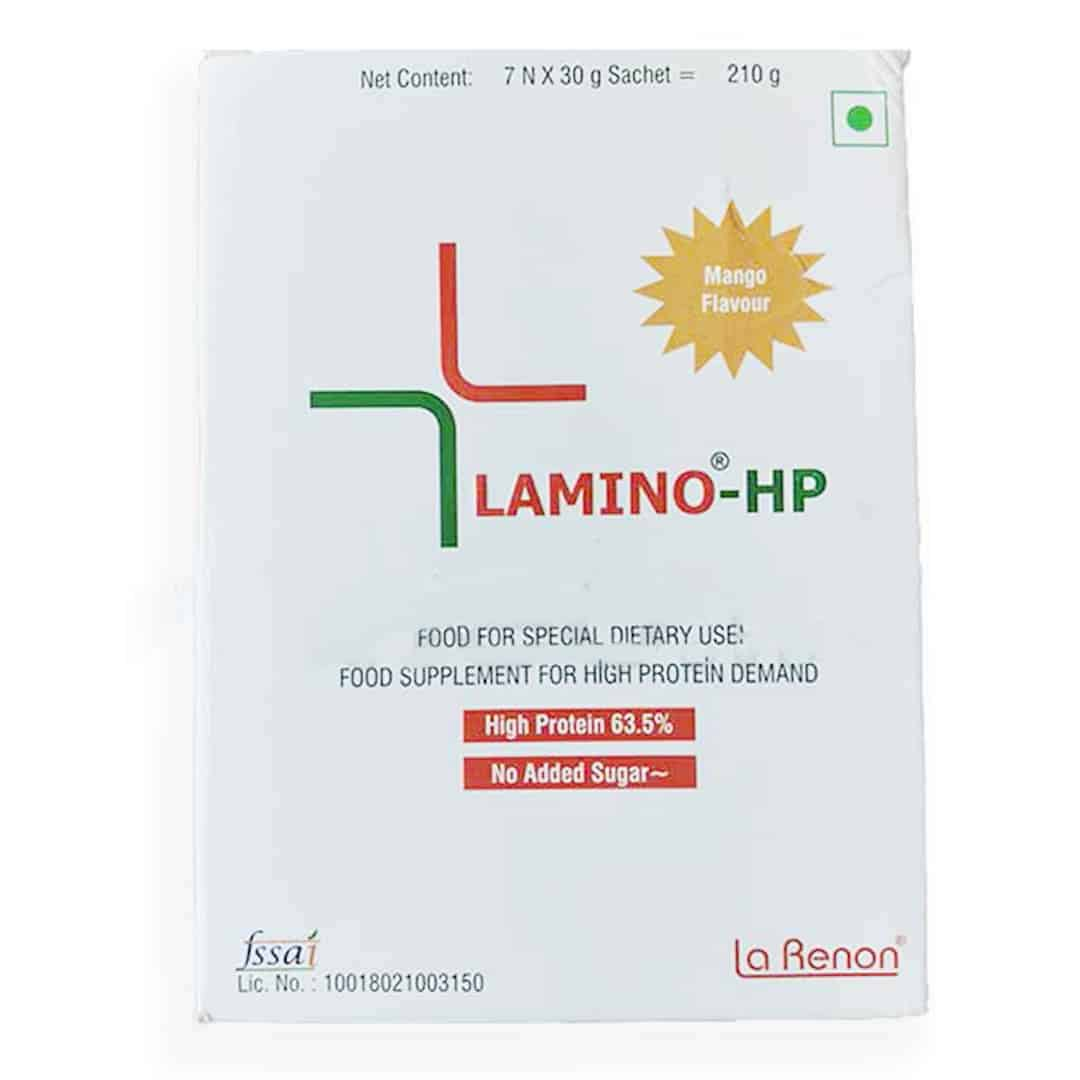DOMPAN TAB
Rs 124 10 % Off
Package size
Estimate Delivery by:
Delivering to

Easy 7 days return available
DOMPAN TAB
Dompan Tablet is a combination medication containing Domperidone (10 mg) and Pantoprazole (20 mg). It is designed to treat conditions such as peptic ulcers, gastroesophageal reflux disease (GERD), and reflux esophagitis, effectively reducing symptoms like nausea, vomiting, and indigestion. Domperidone acts as a prokinetic, improving gut motility and reducing nausea by blocking dopamine receptors. Pantoprazole, a proton pump inhibitor, reduces stomach acid production, aiding in the healing of ulcers and esophageal lesions. Suitable for adults and children over 12 years, Dompan Tablet should be taken 15-30 minutes before meals, swallowed whole without crushing or chewing. Common side effects include dry mouth, constipation, dizziness, and headache. Patients with liver, kidney, or heart conditions should use this medication cautiously.
Product Highlights and Usage:
Active Ingredients: Contains Domperidone (10 mg) and Pantoprazole (20 mg). Uses: Treats peptic ulcers, GERD, reflux esophagitis, and symptoms like nausea, vomiting, and indigestion. Mechanism: Domperidone enhances gut motility and reduces nausea; Pantoprazole decreases stomach acid production, promoting ulcer healing. Dosage: Typically taken 15-30 minutes before meals. Swallow whole, do not crush or chew. Side Effects: Common side effects include dry mouth, constipation, headache, dizziness, and rare severe allergic reactions.
How it works:
DOMPAN TABLET contains two active ingredients: domperidone and pantoprazole. Domperidone is a prokinetic medication with anti-emetic properties. It works by blocking dopamine, a chemical messenger, in the gut, brain, and spinal cord. This action stimulates the gut, reduces acid reflux, and accelerates the movement of food from the stomach to the intestines. Additionally, it prevents the transmission of nerve signals between the vomiting centers and the brain, thereby reducing nausea and vomiting. Pantoprazole is a proton pump inhibitor that decreases gastric acid secretion by inhibiting the H+K+ATPase (proton pump) in the stomach lining. By lowering stomach acid production, DOMPAN TABLET helps manage and heal ulcers, alleviate existing esophageal lesions, and provide relief from unpleasant gastrointestinal symptoms such as acidity, bloating, burping, and indigestion.
Directions for use:
Take DOMPAN TABLET 15-30 minutes before meals or as directed by your physician. Swallow the tablet with a glass of water. Do not crush or chew the tablet. Your doctor will determine the appropriate dose and duration of therapy based on your age, body weight, and medical condition. Do not discontinue DOMPAN TABLET without your doctor's advice.
Warning & Precaution:
PREGNANCY DOMPAN TABLET should be used in pregnant women only if deemed necessary by your physician. Consult your doctor before using it. BREASTFEEDING DOMPAN TABLET may pass into breast milk. It should be used in breastfeeding women only if absolutely necessary. Consult your doctor for guidance. DRIVING AND USING MACHINES DOMPAN TABLET does not typically affect your ability to drive or operate machinery. However, avoid driving or handling heavy machinery if you experience any adverse effects from the medication. ALCOHOL Avoid alcohol consumption while taking DOMPAN TABLET, as it may exacerbate your condition. KIDNEY DOMPAN TABLET should be used with caution in individuals with kidney issues. Consult your doctor before taking it. LIVER DOMPAN TABLET is not recommended for individuals with moderate to severe liver impairment. It should be used cautiously in those with mild liver issues. Consult your doctor before use. ALLERGY Do not use DOMPAN TABLET if you are allergic to Domperidone, Pantoprazole, or any other proton pump inhibitors (such as rabeprazole or omeprazole). HEART DISEASE DOMPAN TABLET is not recommended for patients with heart conditions such as prolonged QT interval or congestive heart failure. Consult your doctor before use.
Super Admin
Lorem Ipsum is simply dummy text of the printing and typesetting industry. Lorem Ipsum has been the industry's standard dummy text ever since the 1500s






